The church and museum of Santa Croce
The church of Santa Croce is located in the square of the same name, which you can reach from the Duomo (cathedral) by taking via del Proconsolo to piazza di San Firenze. At the end of the piazza, turn left into borgo de' Greci until you reach piazza di Santa Croce.
Address: Piazza Santa Croce
Opening hours: Monday to Saturday from 9:30 am to 5:30 pm, Sunday from 1 pm to 5:30 pm. Closed on Tuesday.
Price : 8 €.
Exterior
The construction of the present church began in 1294. Its dimensions were to compete with the Dominican church, Santa Maria Novella. It was completed at the end of the fourteenth century but its present facade dates only from the nineteenth century. The statue on the left side of the church represents Dante.
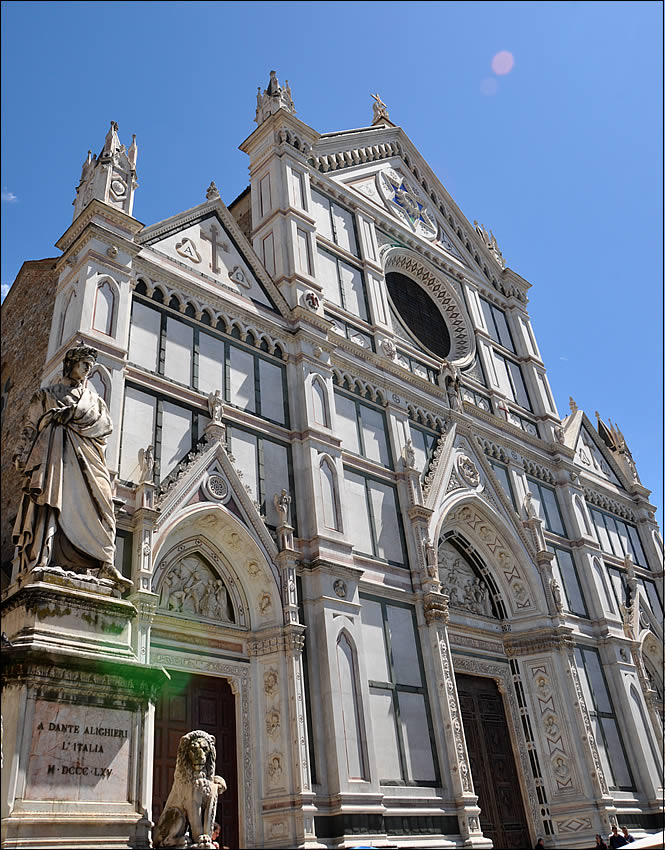 |
Interior
The church has a T-shaped plan with three naves separated by octagonal pillars. The central nave, very wide, could only support a painted wooden frame.
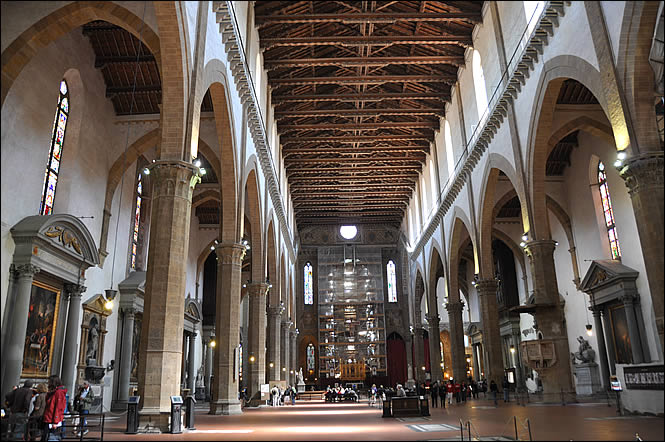 |
In the transept the Capella Maggiore has frescoes by Agnolo Goddi illustrating the legend of the Holy Cross. The crucifix over the altar is attributed to a pupil of Giotto.
To finance Santa Croce the Franciscans had to appeal to the generosity of rich Florentine families. In return, these families asked to be buried there and the sumptuous chapels of the transept bear their names.
Santa Croce also became the Pantheon of the city's leading figures in the arts and sciences. Here you can see the cenotaph of Dante (he is buried in Ravenna) and the tombs of Michelangelo, Machiavelli, Rossini, Galileo and the Humanist Leonardo Bruni.
|
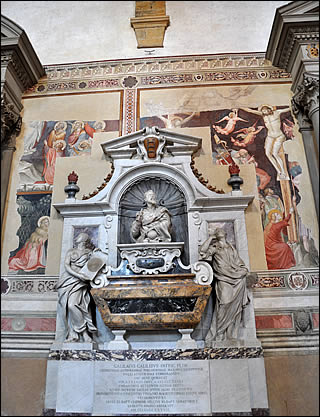 |
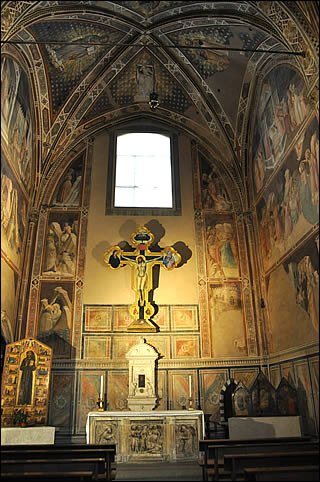 |
The Baroncelli chapel decorated by Taddeo Gaddi, a pupil of Giotto, on the theme of the life of the Virgin leads to the sacristy and to the Rinuccini chapel covered with frescoes on the life of the Virgin and of Saint Mary Magdalene. The Bardi and Peruzzi chapels were painted by Giotto himself and he worked there for many years. These frescoes, unfortunately covered with whitewash in the eighteenth century, although recently restored, do not allow to recover their original beauty. Another Bardi chapel contains the wooden crucifix by Donatello.
|
The Pazzi chapel is located in the first cloister of the XIV century. It was supposed to be the funeral chapel of the Pazzi family, but following their conspiracy (the members of the family were either executed or exiled) it remained empty. It is one of Brunelleschi's architectural masterpieces but it was not finished until 1470, 20 years after his death. Luca della Robbia is the author of the tondis representing the evangelists and the apostles.
|
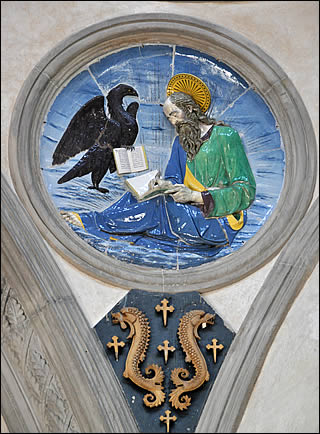 |
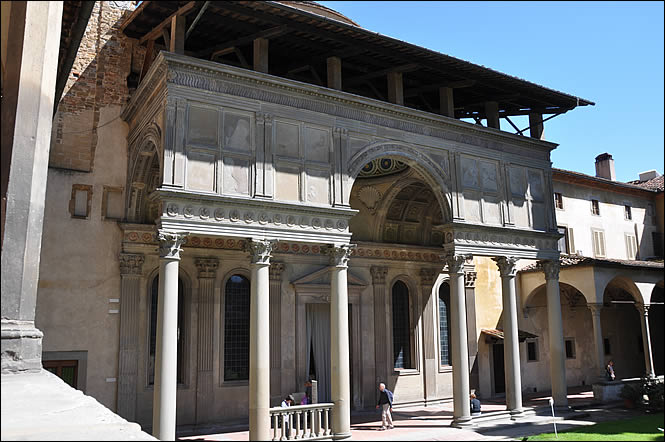 |
Museum of Santa Croce
The access is through the first cloister. It contains Cimabue's Christ, badly damaged by the Arno flood of 1966. The painter frees himself from the constraints of Byzantine painting by abandoning its stiffness and hieraticism. The back wall of the old refectory features a Holy Supper by Taddeo Gaddi and above it a tree of life, each branch of which, starting from the crucifix, supports the figure of a prophet from the Old Testament.
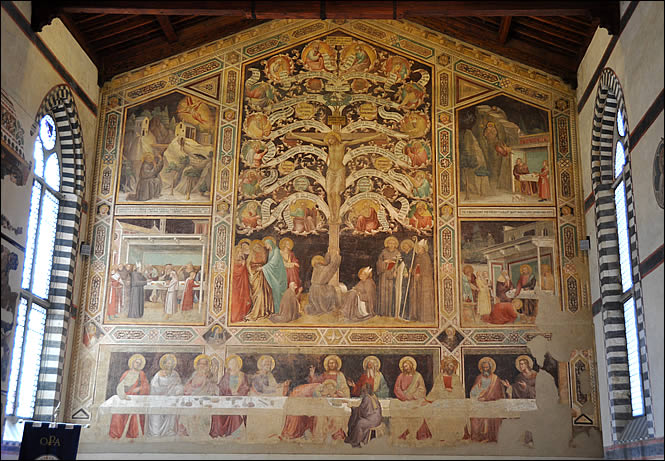 |
The gilded bronze statue of Saint Louis of Toulouse is by Donatello. But other works that once decorated the church are also worthy of note.
The large cloister, to the left of the Pazzi Chapel, was also designed by Brunelleschi and completed in 1453 by Bernardo Rossellino.
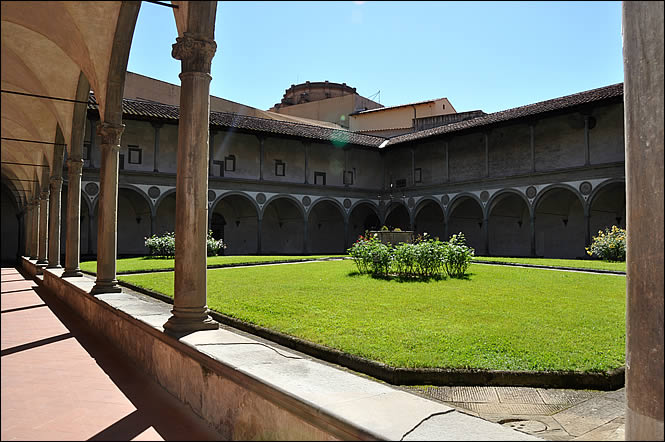 |